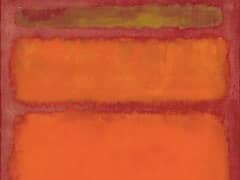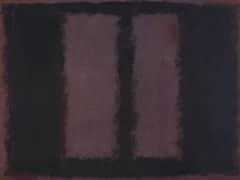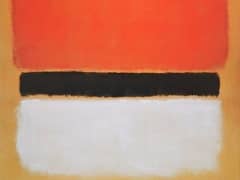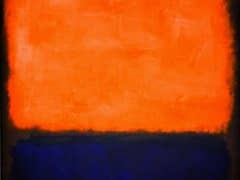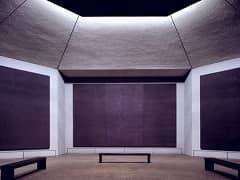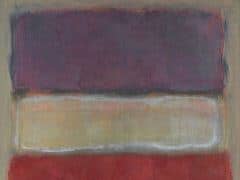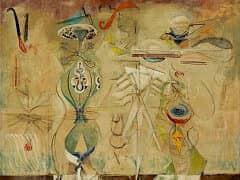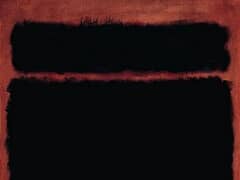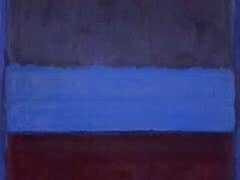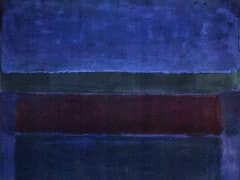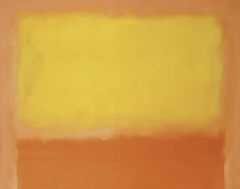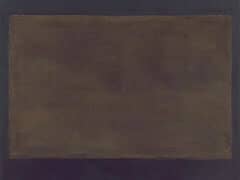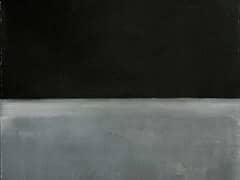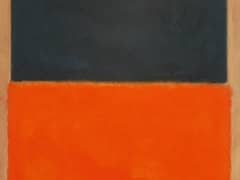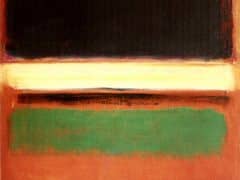Light Red Over Black (1957) by Mark Rothko
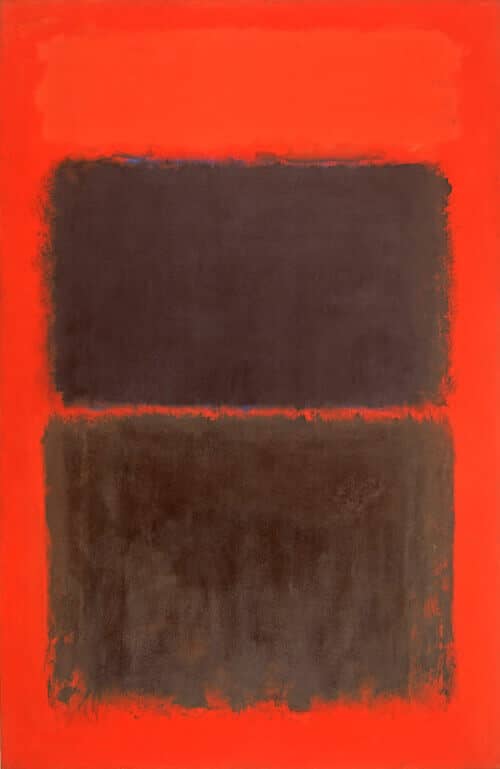
Mark Rothko, just like Jackson Pollock, is regarded as the most intense and spiritually motivated of all the Abstract Expressionist pointers. His mature works, such as Light Red Over Black, consist of simple blocks of semi-translucent point floating against a solid background colour.
Rothko's works are highly contemplative, inviting the spectator to gaze into their ethereal surfaces. He achieved this effect by applying thin washes of point in many layers so that light appears to emanate from their centre. This created a tension between a sense of overall flatness - he used no pictorial devises to suggest perspective - and of infinite depth. Rothko's simple, rectangular forms ore also blurred at the edges to reinforce this sense of weightlessness. To increase the overall impact of his work, Rothko preferred to work in series and to have his works hung together in their own space, thus creating controlled environments, such as the non-denominational chapel he designed in Houston, Texas (1967-69). Indeed, when Rothko donated a series of his late maroon and black paintings to London's Tate Gallery in 1968-69 he specifically stipulated that they be hung together in their own room,

